September is essentially the start of pygmy season. Soon pygmy sundews in collections everywhere will start producing gemmae, which will need to be quickly sown, sold, traded, or gifted, since gemmae are modified leaves rather than seeds and only have a brief shelf life. Keep an eye on
Drosera Gemmae if you're interested in starting up/expanding your pygmy collection. I know I will!
I learned in my
interview with bluemax (and according to things I've read elsewhere) that reducing the photoperiod on my lights should cause my pygmies to form gemmae. I reduced the photoperiod by an hour a couple weeks ago, and I'll be continuing that reduction until they're down to 10 hours or so per day in the deep winter. Hopefully I'll get lots of pygmies that I can start on new pots to share with people. In the mean time, I decided to post another roundup post about my pygmies to see how they're doing before they possibly start making gemmae and get all weird for a couple months.
First up is my first ever
Drosera allantostigma, from the
community pot.
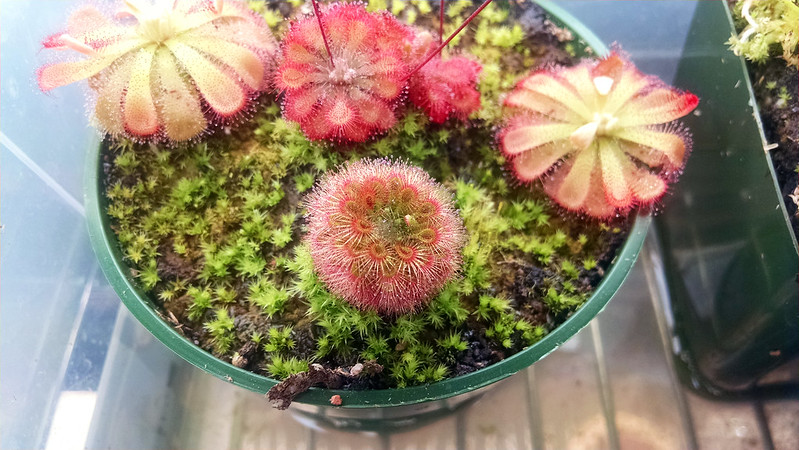 |
| My old friend D. allantostigma hanging out with his buddies. |
My first ever pygmy sundew, acquired quite by accident, and far and away my favorite pygmy species. Also probably my favorite plant in the collection.
Around the time I was watching
D. allantostigma shape up I got some
Drosera scorpioides gemmae from
Drosera Gemmae. It was one of the last sets of gemmae they had for sale, and I'm glad I got them!
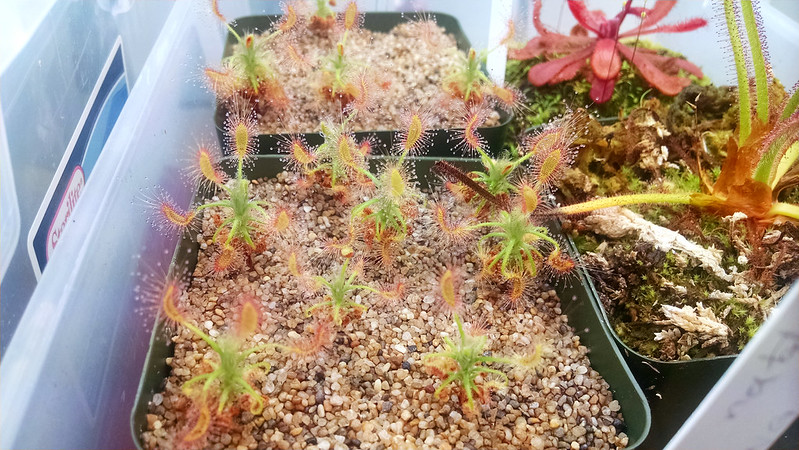 |
| D. scorpioides started from gemmae in March. I like the spacing in this pot. |
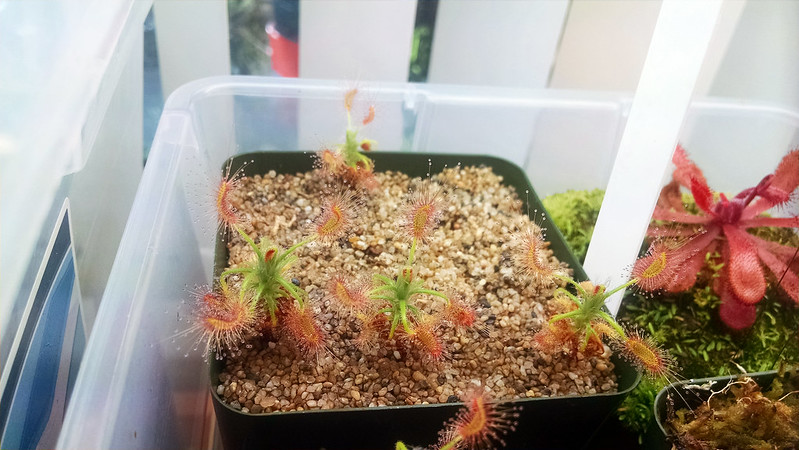 |
| This pot is a little bare since I lost those 3 plantlets. |
Of the 15 gemmae I received, 12 made it to maturity. The other three died when I
removed a humidity cover too soon. I sowed these gemmae on about a centimeter of pure sand, which has totally prevented moss from developing. I'm not sure I would always sow on sand – I've come to appreciate the way a well-mossed pot can look – but it's nice to see that this technique is so successful.
I also got a pot of
D. scorpioides at the
spring BACPS meeting from the raffle.
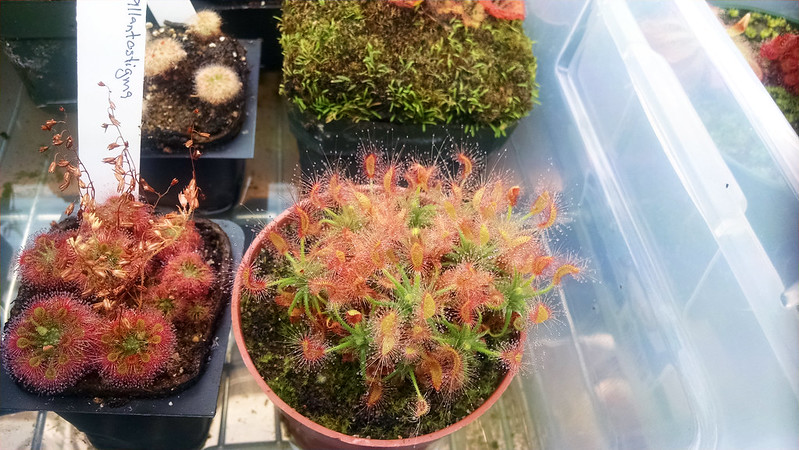 |
| D. scorpioides get quite large, so this is pretty close quarters for them. |
These are in a 2-inch circular pot, rather than the 3.5 inch square pot that houses my others. Also they were sown much more densely. At this stage in their growth they have formed a sort of undifferentiated mass which isn't quite to my tastes aesthetically. Great coloration though – hope these form lots of gemmae.
At the 2014 BACPS
Show and
Sale I picked up 2 species of pygmies from California Carnivores –
Drosera callistos Brookton large form, and
Drosera enodes (Scotts River).
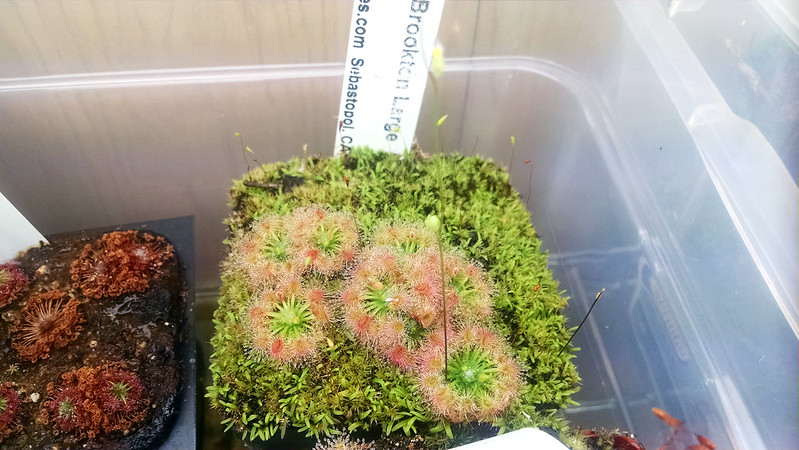 |
| D. callistos with Utricularia bisquamata flower in the foreground. |
 |
| Quite dewy D. enodes. |
Apparently the
D. callistos will have enormous, hilarious orange flowers in the spring. Also, I love the little stem-forming pygmies, and
D. enodes seems to be going at it pretty well.
Finally, back during the
NASC Benefit Auction over at Terra Forums I won a 4-pack of pygmy sundews from Brie. They were beautifully packed, and included
Drosera helodes,
Drosera dichrosepala,
D. allantostigma, and
Drosera pgymaea.
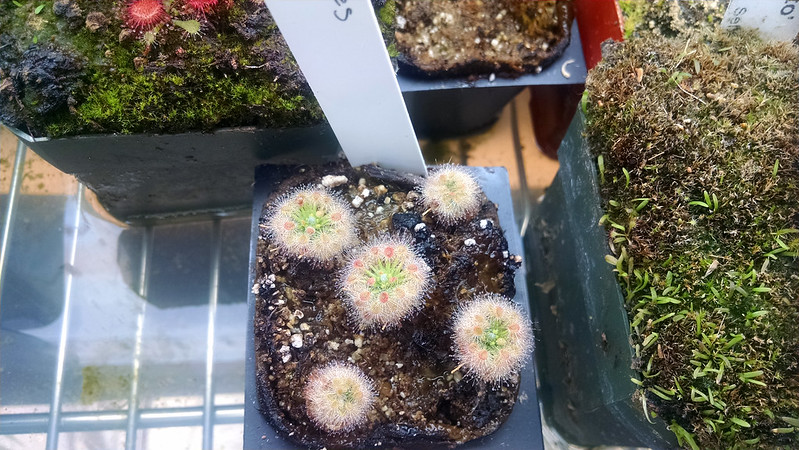 |
| The tentacles on this D. helodes are strikingly pale. |
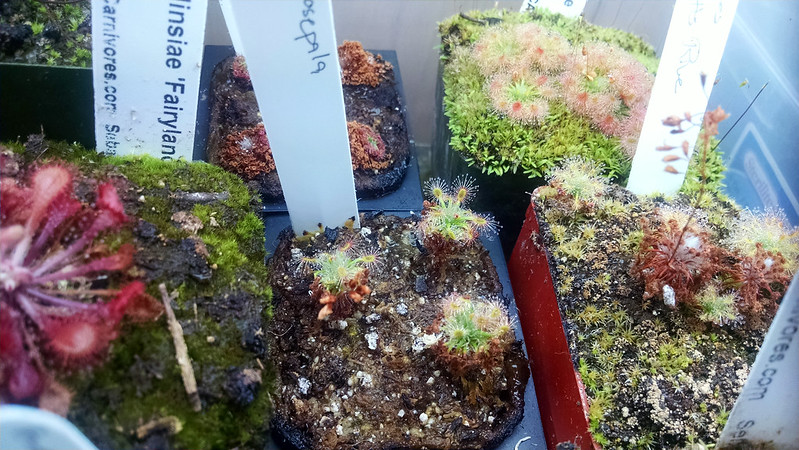 |
| D. dichrosepala reaching for the stars. |
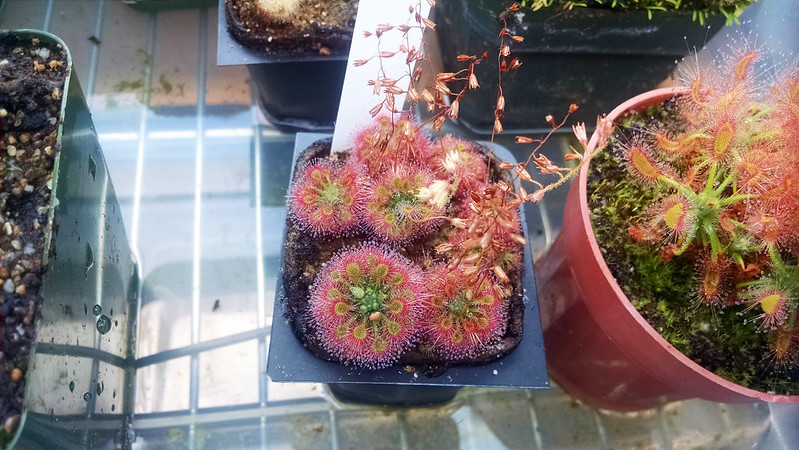 |
| Little jewel-like D. allantostigma. Their flowers were super cute too. |
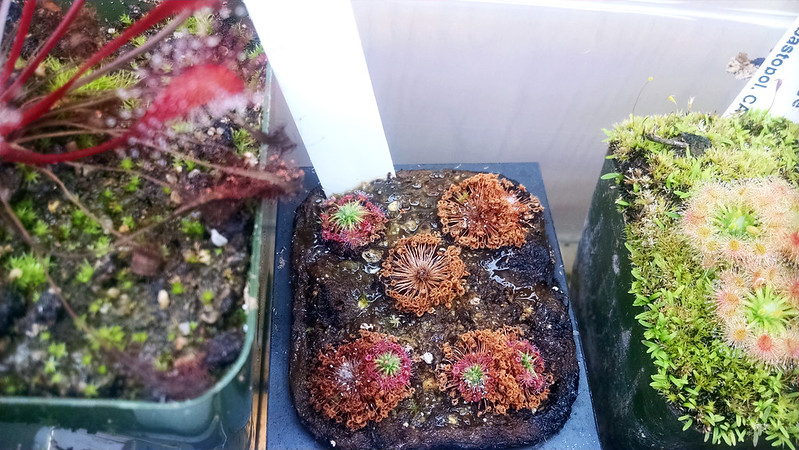 |
| Hope you bounce back little guys! |
As you can see the
D. pygmaea look a little iffy. It's funny, cause I've heard them recommended as one of the easiest pygmy species! Hopefully cooler temperatures and shorter photoperiods will have them springing back to life again.
Pygmies are so cute. I addition to sowing them in pots for propagation purposes, I'm going to make at least one large pot with a bunch of different species growing in it. That will be super fun.










Reading your blog always makes me want to get more pygmies. I think ill be on the look it for alantostigma this fall.
ReplyDelete